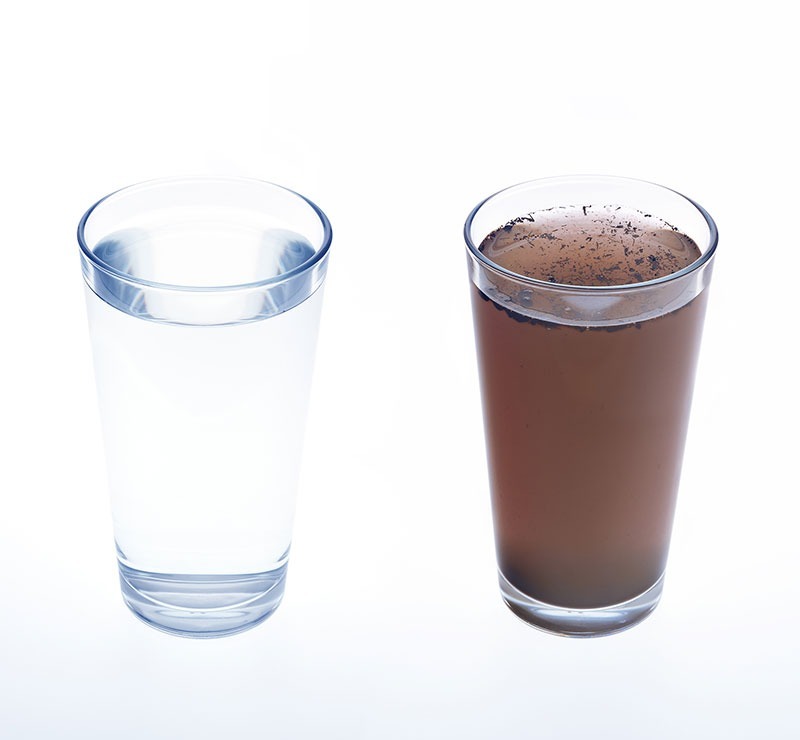Arizona’s Drinking Water: What You Need to Know
October 02, 2023

For the most part, the quality of Arizona’s drinking water is pretty solid. For example, we don’t have the lead issues found in Flint and at least 32 other American cities. Our main water worries revolve around taste and water hardness, though Arizonans have one additional worry that is found across the country, and that is pharmaceuticals commonly found in drinking water.
Luckily, you can solve all of these problems with a variety of home water treatment plumbing solutions, including filtration systems, water softeners, and reverse osmosis systems.
Phoenix-Metro Hard Water Levels
It’s fairly well understood that Arizona has a hard water problem. For reference, water with more than 3.5 grains of calcium and magnesium bicarbonates per gallon is deemed “hard water.” In the Phoenix-Metro area, Gilbert has the lowest levels at 9 grains per gallon. The hard water levels of other cities include:
- Chandler: 16.5
- Glendale: 17.5
- Goodyear: 24
- Mesa: 17
- Peoria: 10.5
- Phoenix: 14.9
- Tempe: 13.9
Those are annual averages, as hard water levels vary according to the time of year.
Hard water is the common term for water with a high concentration of calcium and magnesium bicarbonates. It does not present safety issues as regards drinking. It does, however, present a danger to plumbing and appliances.
You’ve likely seen the results of hard water on a faucet. That white build-up you see at the end of the faucet that resembles mineral growth is the result of hard water. Now realize that that same build-up occurs in your pipes, dishwasher, washing machine, sink and shower faucets, and shower doors and walls.
In addition, hard water tends to have an unpleasant taste and appearance and even leads to build-up on your skin. It also causes dry skin, which is why many people, when they first install a water softener, feel as though their new soft water leaves a film on their skin. The opposite is true. Getting rid of the hard water build-up on your skin allows your body’s natural lubricants to finally reach the surface, leading to softer skin.
Water Softeners: The Hard Water Solution
Installing a water softener for your home protects your plumbing and appliances from hard water and mineral build-up, extending the life of your washing machine and dishwasher, as well as your irrigation system and plumbing fixtures.
If you wonder whether your home has hard water, take a trip to your local home improvement or department store; most of them sell water-testing kits. Your utility company should also have the answer.
Water Softener Myths
There are a lot of myths surrounding water softeners. We already talked about the myth that water softeners leave a film on your skin. Other common misconceptions include:
- Water that travels through a softener has a high sodium content: This myth probably arose because water softeners use salt. What actually happens is an exchange of the calcium and magnesium in the hard water for the salt in the water softener. In the end, your 8-ounce glass of water has a little over 12 milligrams of sodium. The same amount of soda contains 30 milligrams.
- Water softeners don’t need to use salt to be effective: A water softener that doesn’t use salt (such as a catalytic or magnetic system) doesn’t actually soften the water, though it may work as a scale inhibitor (though not always). If the unit includes a carbon filter, it may improve the water’s taste, but that is due to the filter, not softer water.
- Water softeners deprive your body of healthy nutrients: Your body does not digest the calcium and magnesium found in hard water because, unlike minerals found in food items, they are in an inorganic form.
Pharmaceuticals and Contaminants in Drinking Water
In 1999, two scientists published a paper demonstrating the presence of pharmaceuticals in freshwater sources. It wasn’t the first time science addressed this issue, but it was one of the first times this type of research drew a wide audience. It kicked off wider, closer scrutiny of the issue and numerous studies since.
Originally, people thought pharmaceutical plants were the greatest culprit in this type of water pollution. It’s true that if you live near one of these plants, you have a greater chance of drinking water laced with traces of prescription drugs. However, even if you live nowhere near a pharmaceutical plant, traces of medication exist in your drinking water.
This is due to the fact that humans taking these medications help create this pollution in two ways. The first is excrement. The percent of a drug that your body metabolizes varies by the drug. For most drugs, the average is around 90 percent, though for some, the absorption level is much lower. Either way, the medication not absorbed by your body leaves it as waste.
The second way humans introduce pharmaceuticals into the water supply is by flushing unused prescriptions down the toilet (the FDA no longer advises this). Researchers discovered traces of antibiotics, antidepressants, contraceptives, hormones, steroids, and much more in treated water systems.
It is important to note that the concentration of these medications is typically around 10 nanograms per liter or 10 parts per trillion. To understand how small that is, realize that one part per trillion is comparable to approximately one second in a 64-year period.
Scientists have studied numerous freshwater species to determine the impact of this, as determining its impact on humans is difficult. This is because a single instance isn’t noticeable, not at the rate of 10 nanograms per liter. However, we don’t drink a single liter of water in our lifetimes. We have been drinking water every day for decades. We use it in cooking and as the primary ingredient in most beverages. We water our plants with it and give it to our pets. In other words, it is the cumulative effect of drinking pharmaceutical-laced water that concerns scientists.
Reverse Osmosis and Water Filtration Systems: The Water Pollution Solution
If you ever wondered about the impact of an RO system, just talk to someone who has one. Water coming through these systems is crystal-clear and tastes delicious. In fact, most RO owners enjoy tap water that tastes better than bottled water.
The whole-house water filtration system combines filtration with water softening technology to ensure the water entering your home is clean and delicious and doesn’t harm your plumbing or appliances. Costs start at around $3,000 and may exceed $5,000, depending on house size and whether you already have a water softener.
Reverse Osmosis and Water Filtration Myths
Again, there are plenty of myths surrounding water treatment systems. Some of the more common ones include:
Purified water drains your body of essential minerals: This story began making the rounds on the Internet a while back. Drinking purified water, whether from a filter or RO system, does not leach away minerals, no matter what your uncle’s email said.
RO systems create acidic water: You do find a lower pH level in reverse osmosis water, which has an average pH of 6 versus untreated tap water’s pH level of 7. However, this presents no health concerns or danger to your pipes. What’s more, most popular drinks have a much lower pH level. Coffee rates a 4, orange juice comes in at 3, and sodas are around 2.5.
The best way to know what you need, and what your water quality is, is to talk to a professional. The team at Patrick Riley | Isley’s will assess your needs and go over all of your options with you. Simply call us or click the button below to schedule your assessment and service.
Get 10% off (Up to $150)

Ty Lindsay is the Director of Field Operations at Patrick Riley | Isley’s and a 15-year veteran of the plumbing and HVAC trades. In 2010, Ty earned his Journeyman’s plumbing license. He became a Master Plumber five years later and earned his Journeyman HVAC technician’s license that same year. Ty’s breadth of knowledge in plumbing and HVAC includes both residential and commercial work. He’s been a loyal member of the Patrick Riley | Isley’s team since 2016.
- Posted in:
- Tips
